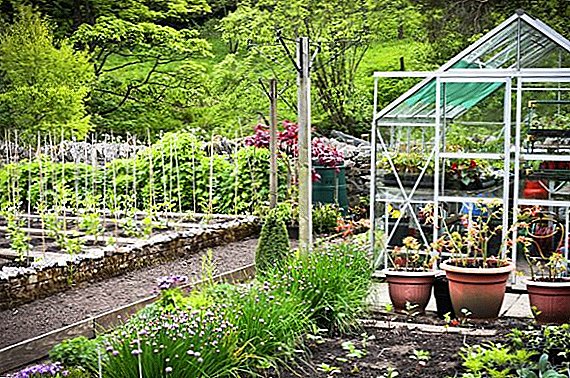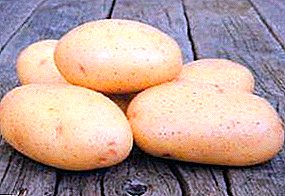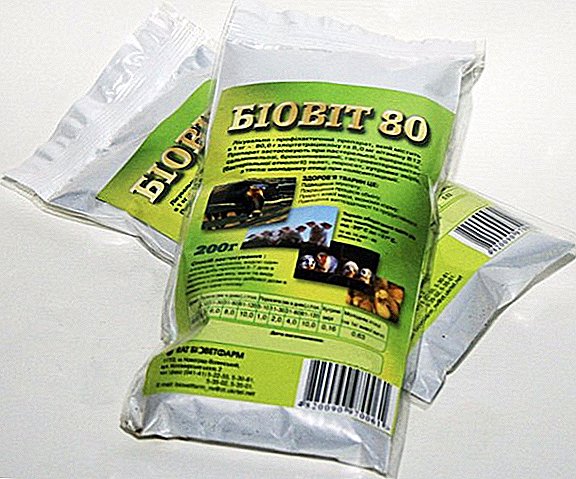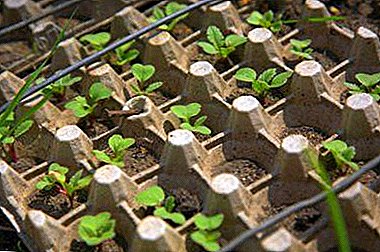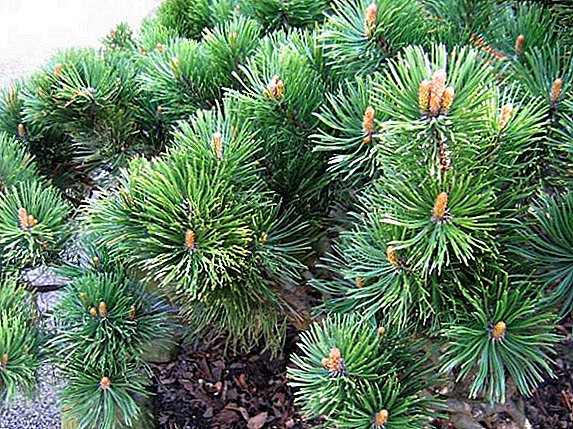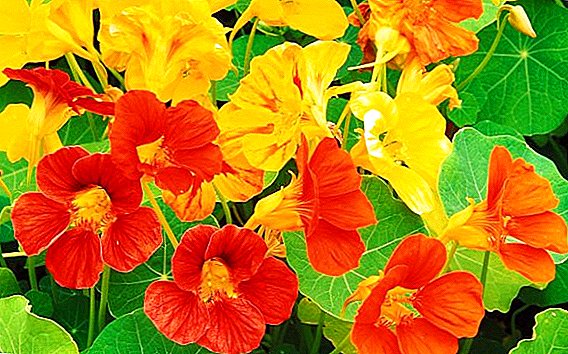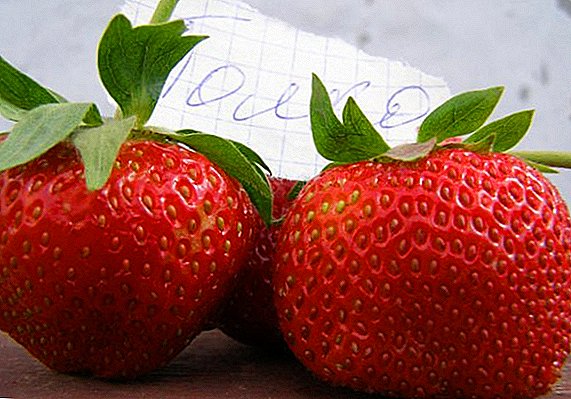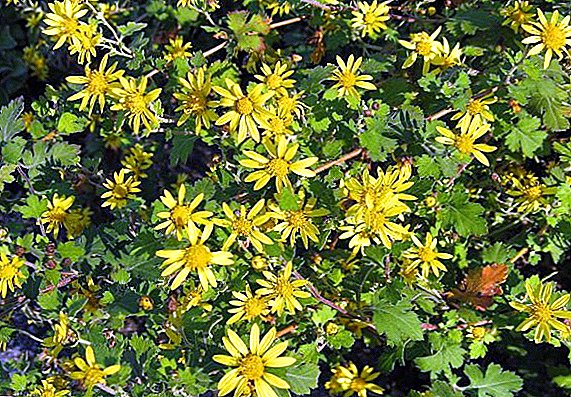 People who love to decorate their summer cottage or yard, it is always interesting to grow something new, pleasing the eye - I want this plant to stand out with shape, leaves, flowers, colors and other things. And the plant, which will be discussed further, is unusual and beautiful - this is Indian chrysanthemum.
People who love to decorate their summer cottage or yard, it is always interesting to grow something new, pleasing the eye - I want this plant to stand out with shape, leaves, flowers, colors and other things. And the plant, which will be discussed further, is unusual and beautiful - this is Indian chrysanthemum.
Description
In modern floriculture more than 10 thousand species of Indian chrysanthemums. They are different colors, sizes, shapes.
Grow large chrysanthemum elite varieties at home is not easy. Therefore, we will focus on the traditional Indian chrysanthemum. In the people she wears the name "Indian gold".
Did you know? One of the Eastern sages said: "If you want to be happy all your life, grow chrysanthemums."Indian chrysanthemum is not the same, so it will grow for many years.
 In the winter it will have to hide in the cellar, unless you want to turn it into a houseplant.
In the winter it will have to hide in the cellar, unless you want to turn it into a houseplant.In the spring the sprouts will appear again, and the plant will be painted in bright colors in the new autumn.
Did you know? The name of the plant in Greek means "golden flower".It grows throughout the Middle East, the Caucasus, India and Europe.
The stem grows to a maximum of 1.5 m, on average - up to 90 cm.
Stems are simple, branched. Leaves dissected.
It blooms, usually from August to November or from September to December, depending on the climate.
The flowers are full with basket inflorescences, most often golden yellow.  A flower crowns each twig of a plant. Therefore, in the fall, at the time of flowering, chrysanthemum is especially beautiful.
A flower crowns each twig of a plant. Therefore, in the fall, at the time of flowering, chrysanthemum is especially beautiful.
Culture is grown in gardens, courtyards, lawns and flower beds, used in landscape design. Can grow in indoor conditions.
The use of different varieties of Korean chrysanthemums, multiflora in the decor of the gardens will enrich them in the fall with a palette of bright colors.
Growing up
Cultivation of Indian chrysanthemum is easy, most often comes from seeds.
It can be grown from cuttings, but from seeds it is easier and more reliable.
If you already have a chrysanthemum, you can multiply it by division every 2-3 years. The probability that seedlings grown from seeds will take root is higher than the likelihood of cutting.
Growing from seed
Growing from seed will have several stages:
- soil preparation;
- seed preparation;
- planting seeds;
- care of seedlings;
- landing in the ground.
Next, let's talk in more detail, step by step, how to grow chrysanthemum from seeds.
For planting seeds will need boxes with suitable soil. It should be a mixture of peat and sand in a 1: 1 ratio. The soil must be moistened.
Seeds for planting must also be prepared. To do this, they need to be stratified: put the seeds in a damp cloth and plastic bag, then for 3-4 days put in the refrigerator or in a room with a temperature of about 4-5 ° C, leave wet before planting, do not dry.  Seeds should be planted in rows. Sufficient distance - 10 cm between them. Seeds are scattered on the moistened soil, slightly pressed into the soil, slapped - do not sprinkle the earth from above. In addition to moisture, seeds need light.
Seeds should be planted in rows. Sufficient distance - 10 cm between them. Seeds are scattered on the moistened soil, slightly pressed into the soil, slapped - do not sprinkle the earth from above. In addition to moisture, seeds need light.
Boxes covered with foil. Reveal in order to moisten the soil and ventilate. The soil should be constantly wet, but not wet. The seedlings can die from the closure.
When the seeds have risen, the soil should be loosened periodically. The film is removed when the seedlings have two or three leaves. The seedlings are planted in the ground when the air and the ground warm up quite well: after the frosts on the ground leave.
Important! Be prepared for the fact that the chrysanthemum grown from seeds will bloom only in the second year.Planting seedlings and ends the process of growing chrysanthemums from seeds. Because further care for the plant is the same, regardless of how it was grown: from seeds or cuttings.
Growing cuttings
Growing a plant by cuttings can be done in two ways.:
- with the germination of cuttings in a pot and planting in the soil of the finished plant;
- sprouting the cutting immediately in open ground.
The soil should be well moistened, but not poured. Since the room temperature is suitable, you can cover the film at will.
If there is a high temperature in the room, the plant may “suffocate” from moisture and temperature under the film. Be careful, observe what conditions are more comfortable for the plant.  If you covered with a film, then with the advent of leaves it is not necessary. Give the plant more light, but not an open sun. For pots, an east window is best. Then you just need to wait for the heat to plant sprouts in open ground.
If you covered with a film, then with the advent of leaves it is not necessary. Give the plant more light, but not an open sun. For pots, an east window is best. Then you just need to wait for the heat to plant sprouts in open ground.
Rooting cuttings can be even in the autumn, even in winter.
When growing chrysanthemums in the second way, cuttings are planted directly into the ground in spring. They should be about 20-25 cm long, so that there is a possibility of germination in both the underground and the ground part.
Planting should be carried out at a distance of 45-50 cm so that when the bush grows, it will be spacious.
After planting the cuttings, wire arcs should be installed over them and covered with film. You can only open the ends of the "greenhouse" for airing, it is not necessary to disclose all of it. The film in no case should not touch the cuttings, and then - sprouted buds. The soil should be regularly moistened.
When the sprouts are strong, the film is removed, you can feed them with nitrogen fertilizers.
Care
Whatever method of growing Indian chrysanthemums you choose - from seed or grafting - caring for a plant is especially important.
Crop care includes watering, feeding, pruning, transplanting. Important factors for normal development is also the temperature and humidity of the air, the choice of soil.
Important! For the formation of a beautiful lush bush with a variety of flowers, the plant must always be pinned.
Air humidity
Chrysanthemum requires moderate humidity, about 70-75%, in the period before flowering - 60-65%.
The soil
Culture grows well on any fertile, well-fertilized soil. More suitable soil is neutral, slightly acid. 
Watering
Chrysanthemum loves water, but watering should be moderate. You can water 1-2 times a week, and not necessarily at the root, you can "rain", but not often.
Important! In no case can not flood the plant - from this it can rot.
Top dressing
Like any other, our plant needs feeding. The soil before planting should be well fertilized with humus, later feeding is best done in stages.
When the leaves grow - you need to feed with nitrogen fertilizers. When buds appear, they use phosphorus-potash fertilizers.
Feed solution needed, following the instructions for the application of fertilizers.
Important! Soil over-fertilization can reduce flowering.
Pruning
After the flowers have fallen, the entire above-ground part of the chrysanthemum should be cut at the root. Later, the roots are dug out with a large earthen clod and placed in a cellar, in the winter they occasionally moisten this clod.
If you decide to transplant the chrysanthemum from the garden to the pot and bring it to the room for the winter, the plant will be more pleasant for the eye with flowering. When you notice that the last flowers are blooming, there are no more buds left, and the branches are leaning in different directions, it means that the time has come for pruning. The plant, as in other cases, cut at the root, and the pot is placed in a cool place.
Transfer
When you dig a chrysanthemum for the winter, the transplant, thus, turns out an annual.  Try when planting a chrysanthemum in the spring every time to pick her a new place. Before the transplant itself, the ground should be well moistened, replanted with a large earthen ball, trying not to damage the roots. After transplanting water, add organic fertilizer.
Try when planting a chrysanthemum in the spring every time to pick her a new place. Before the transplant itself, the ground should be well moistened, replanted with a large earthen ball, trying not to damage the roots. After transplanting water, add organic fertilizer.
Beneficial features
Like many plants, Indian chrysanthemum has beneficial properties. It is used in pharmacology. The plant contains essential oils, chrysanthemum glycoside, camphor, vitamin A and other beneficial substances.
Room chrysanthemums are recommended to be placed in children's rooms, along with chlorophytum, lemon tree, hibiscus, spathiphyllum, violet, kalanchoe, sanseverie.The petals of Indian chrysanthemum flowers are used as a means of stimulating the appetite, as well as in the treatment of Parkinson's disease.
Also, the infusion of petals taken at high temperature. Fresh leaves are made with migraines.
Indian chrysanthemum, grown by hand, perfectly uplifting. At the time when the period of flowering of the plants is over, the leaves from the trees begin to fall off, our beauty pleases the eye with bright sunny flowers.


